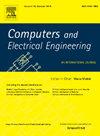Multi-faceted sustainability improvement in low voltage power distribution network employing DG and capacitor bank
IF 4
3区 计算机科学
Q1 COMPUTER SCIENCE, HARDWARE & ARCHITECTURE
引用次数: 0
Abstract
Efficient distribution of active and reactive power in distribution networks is crucial for ensuring that consumer demand is met and that electrical power quality is maintained. This requires careful planning, particularly in terms of optimally placing and sizing distributed generator (DG) and capacitor bank (CB) units. These units play a key role in minimizing power losses and voltage fluctuations within the network. However, implementing DG and CB units in unbalanced distribution networks presents unique challenges due to inherent system unbalances. To address these challenges, this article proposes a method for allocating and sizing DG and CB units in unbalanced distribution networks. The approach accounts for the network's unbalance and targets multiple objectives, such as reducing power losses, improving multi-phase voltage stability, and minimizing phase-to-phase voltage unbalance. The fast and flexible radial power flow (FFRPF) technique is employed to model complex interactions and constraints within the network, leading to a multi-objective optimization problem. This optimization problem is solved using the weight aggregated particle swarm optimization (WA-PSO) method, a variant of particle swarm optimization tailored for multi-objective functions. WA-PSO simplifies the process by combining multiple objectives into a single function using weighted aggregation. The efficacy of this approach is validated on 19, 34, and 123-node unbalanced radial distribution networks (URDNs). The results show significant improvements in power delivery efficiency across all tested networks, especially when DG and CB units are operated simultaneously. Specifically, DG and CB integration led to a reduction in system losses by 89.90 %, 88.42 %, and 86.87 %, and a decrease in three-phase voltage unbalance indices by 88.75 %, 81.68 %, and 39.05 %, for the 19, 34, and 123-node systems, respectively, while maintaining voltage stability within acceptable limits. Additionally, CO2 emissions were reduced by 52 %, 62 %, and 53 % when microturbines were utilized instead of coal-based thermal power plants, further highlighting the environmental benefits of the proposed approach.
利用 DG 和电容器组多方面改善低压配电网络的可持续性
配电网络中有功和无功功率的有效分配对于确保满足用户需求和保持电能质量至关重要。这需要精心规划,特别是在优化分布式发电机 (DG) 和电容器组 (CB) 的布置和大小方面。这些设备在最大限度减少电网内的电力损耗和电压波动方面发挥着关键作用。然而,由于固有的系统不平衡,在不平衡配电网络中实施分布式发电机和电容器组单元面临着独特的挑战。为了应对这些挑战,本文提出了一种在不平衡配电网络中分配和确定 DG 和 CB 单元大小的方法。该方法考虑了配电网的不平衡性,并以降低功率损耗、改善多相电压稳定性和最大限度减少相间电压不平衡等多个目标为目标。该方法采用快速灵活的径向功率流(FFRPF)技术来模拟网络内复杂的相互作用和约束条件,从而产生一个多目标优化问题。该优化问题采用权重聚合粒子群优化(WA-PSO)方法解决,该方法是粒子群优化的一种变体,专为多目标函数量身定制。WA-PSO 利用加权聚合法将多个目标合并为一个函数,从而简化了过程。这种方法的有效性在 19、34 和 123 节点的不平衡径向配电网络 (URDN) 上得到了验证。结果表明,所有测试网络的电力输送效率都有明显改善,尤其是当 DG 和 CB 设备同时运行时。具体而言,在 19 节点、34 节点和 123 节点系统中,DG 和 CB 的集成使系统损耗分别降低了 89.90 %、88.42 % 和 86.87 %,三相电压不平衡指数分别降低了 88.75 %、81.68 % 和 39.05 %,同时将电压稳定性保持在可接受的范围内。此外,当使用微型涡轮机替代燃煤火力发电厂时,二氧化碳排放量分别减少了 52%、62% 和 53%,进一步凸显了拟议方法的环境效益。
本文章由计算机程序翻译,如有差异,请以英文原文为准。
求助全文
约1分钟内获得全文
求助全文
来源期刊

Computers & Electrical Engineering
工程技术-工程:电子与电气
CiteScore
9.20
自引率
7.00%
发文量
661
审稿时长
47 days
期刊介绍:
The impact of computers has nowhere been more revolutionary than in electrical engineering. The design, analysis, and operation of electrical and electronic systems are now dominated by computers, a transformation that has been motivated by the natural ease of interface between computers and electrical systems, and the promise of spectacular improvements in speed and efficiency.
Published since 1973, Computers & Electrical Engineering provides rapid publication of topical research into the integration of computer technology and computational techniques with electrical and electronic systems. The journal publishes papers featuring novel implementations of computers and computational techniques in areas like signal and image processing, high-performance computing, parallel processing, and communications. Special attention will be paid to papers describing innovative architectures, algorithms, and software tools.
 求助内容:
求助内容: 应助结果提醒方式:
应助结果提醒方式:


